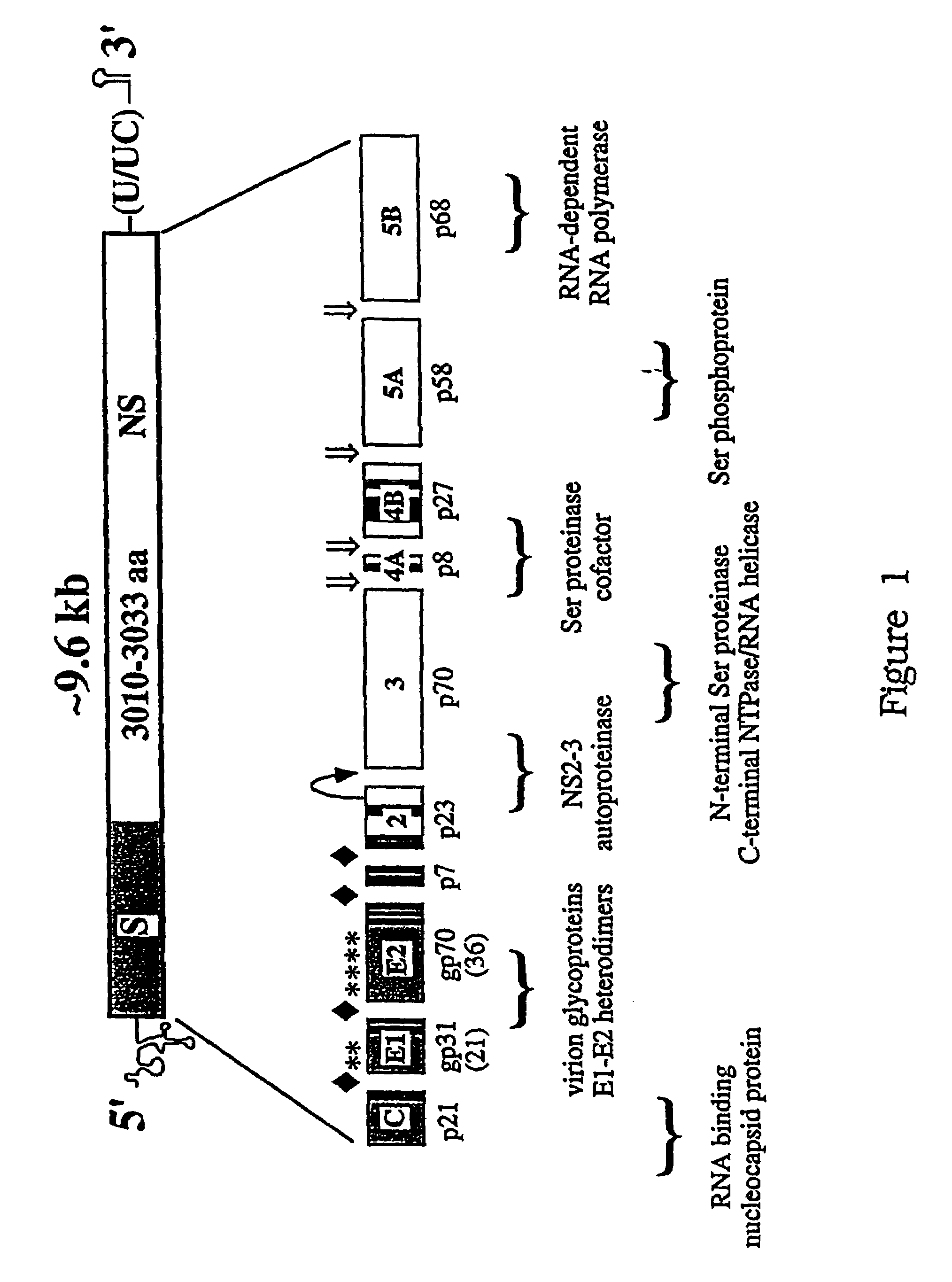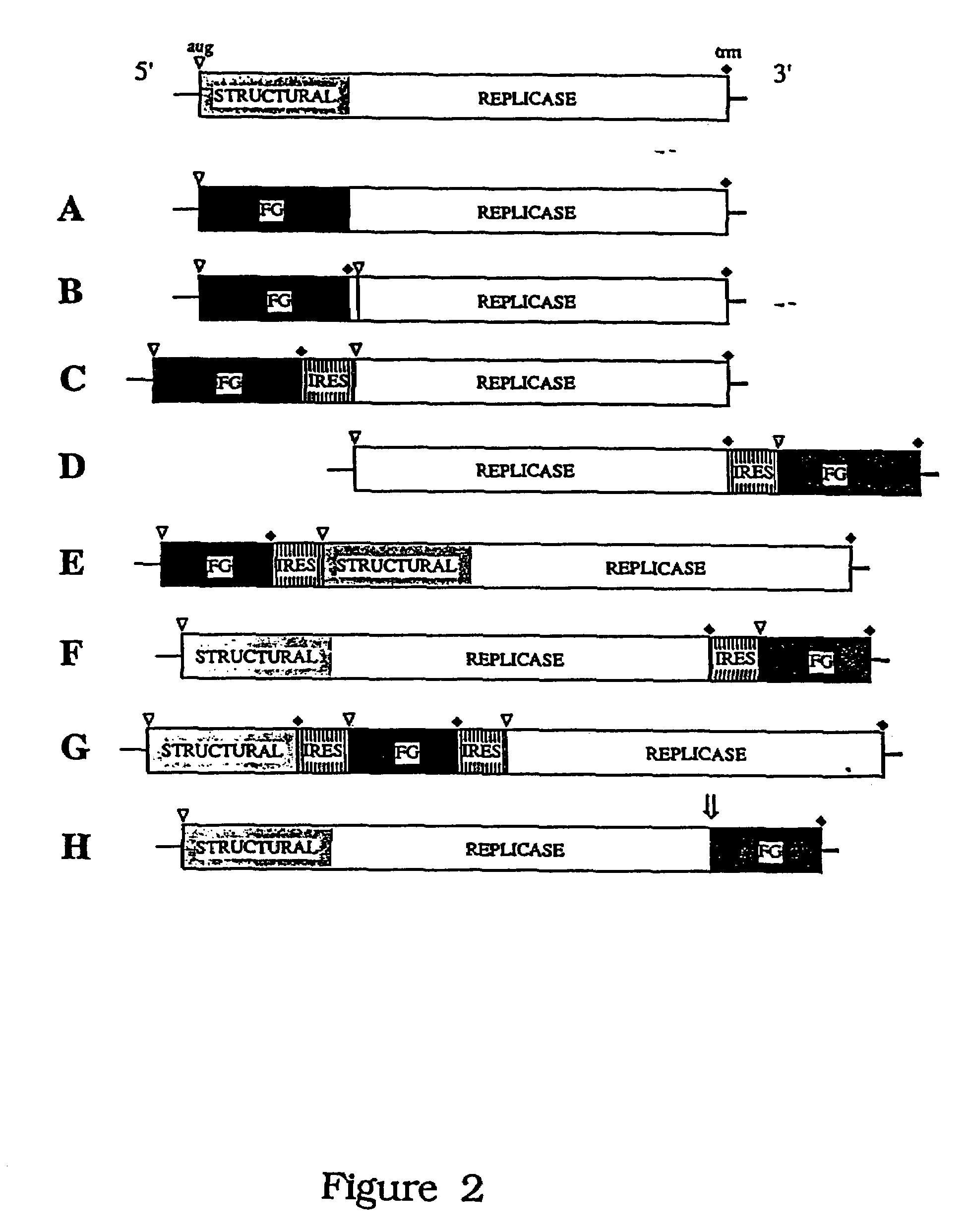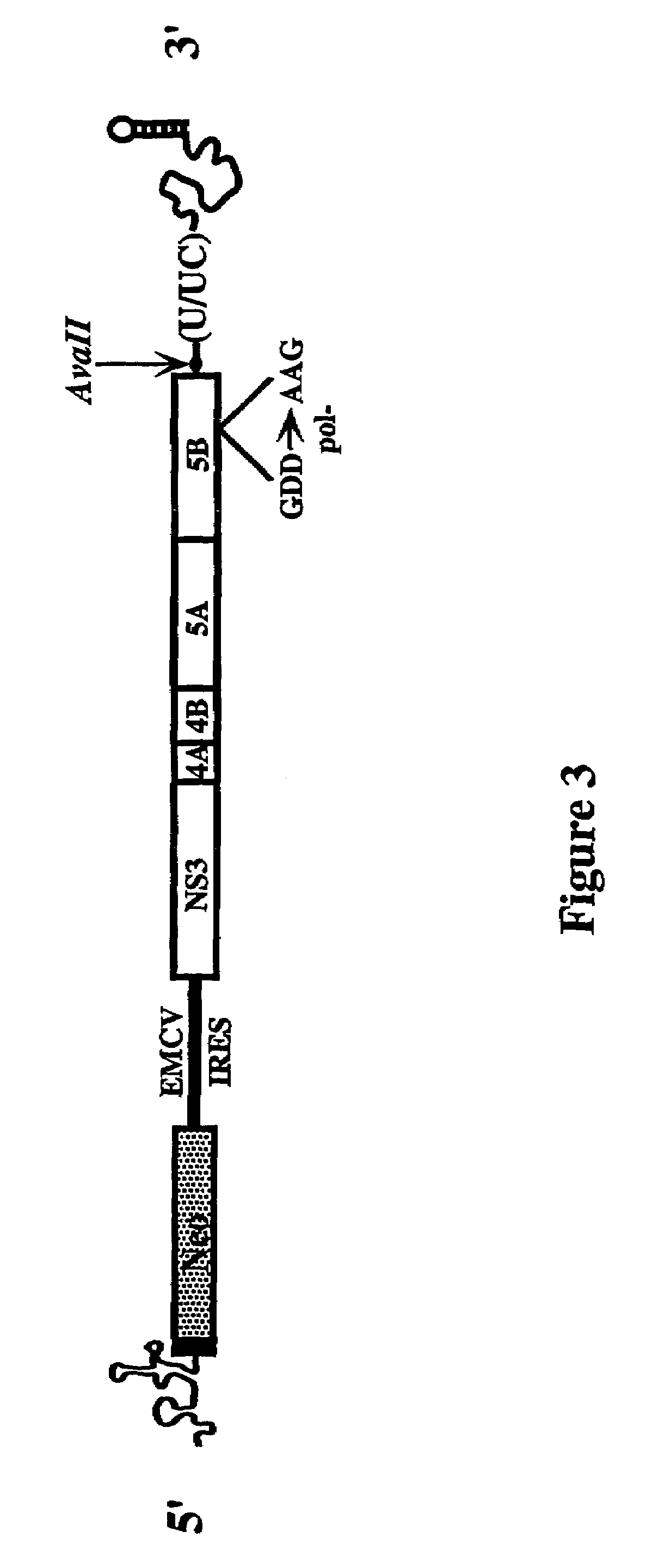HCV variants
a technology of hepatitis c virus and variants, which is applied in the field of production and use of hcv variants, can solve the problems of difficult to obtain unambiguous evidence of replication in these tissues in vivo, hcv virion formation and release may be inefficient, and the structure and physical properties of hcv virion have been hampered, so as to achieve greater transfection efficiency and the ability to survive sub-passage
- Summary
- Abstract
- Description
- Claims
- Application Information
AI Technical Summary
Benefits of technology
Problems solved by technology
Method used
Image
Examples
example
[0192]This example describes the production and evaluation of replicons comprising a neo selectable marker and a polyprotein coding region encoding subtype 1b nonstructural proteins.
Materials and Methods
[0193]Cell lines. The Huh7 cell lines were generously provided by Robert Lanford (Southwest Foundation for Biomedical Research, San Antonio, U.S.A.) and Ralf Bartenschlager (Johannes Gutenberg University Mainz, Mainz, Germany) and maintained in Dulbecco's modified minimal essential media (DMEM; Gibco-BRL) supplemented with 10% fetal calf serum (FCS), and nonessential amino acids.
[0194]Assembly of a selectable subtype 1b replicon. An HCV subtype 1b replicon was constructed which is similar to the replicon described in Lohmann et al., Science 285:110-113 (1999). For that construction, a step-wise PCR-based assay utilizing KlenTaqLA DNA polymerase (Wayne Barnes, Washington University) was developed. cDNAs spanning 600-750 bases in length were assembled from 10-12 gel-purified oligonucle...
PUM
 Login to View More
Login to View More Abstract
Description
Claims
Application Information
 Login to View More
Login to View More - R&D
- Intellectual Property
- Life Sciences
- Materials
- Tech Scout
- Unparalleled Data Quality
- Higher Quality Content
- 60% Fewer Hallucinations
Browse by: Latest US Patents, China's latest patents, Technical Efficacy Thesaurus, Application Domain, Technology Topic, Popular Technical Reports.
© 2025 PatSnap. All rights reserved.Legal|Privacy policy|Modern Slavery Act Transparency Statement|Sitemap|About US| Contact US: help@patsnap.com



